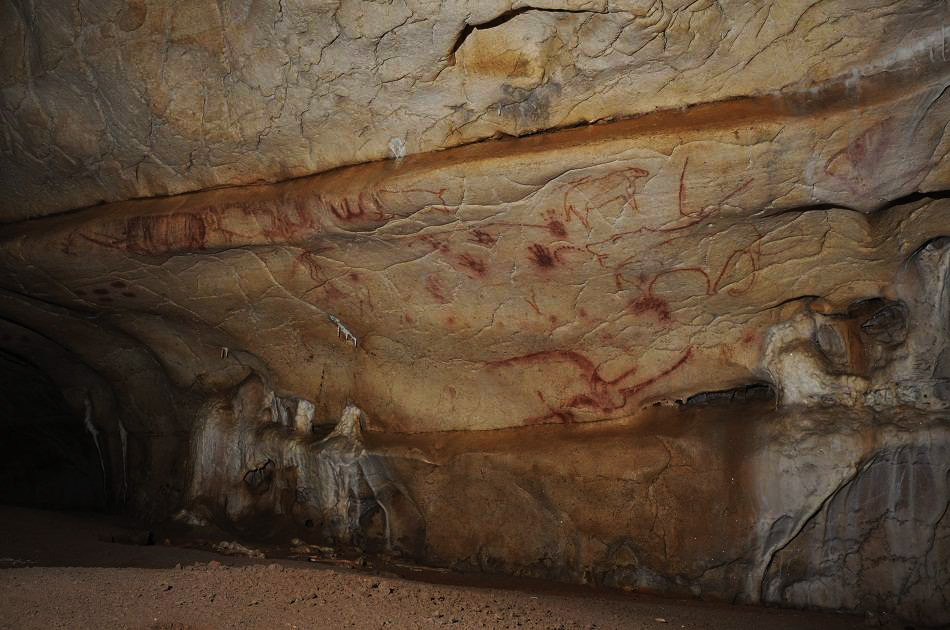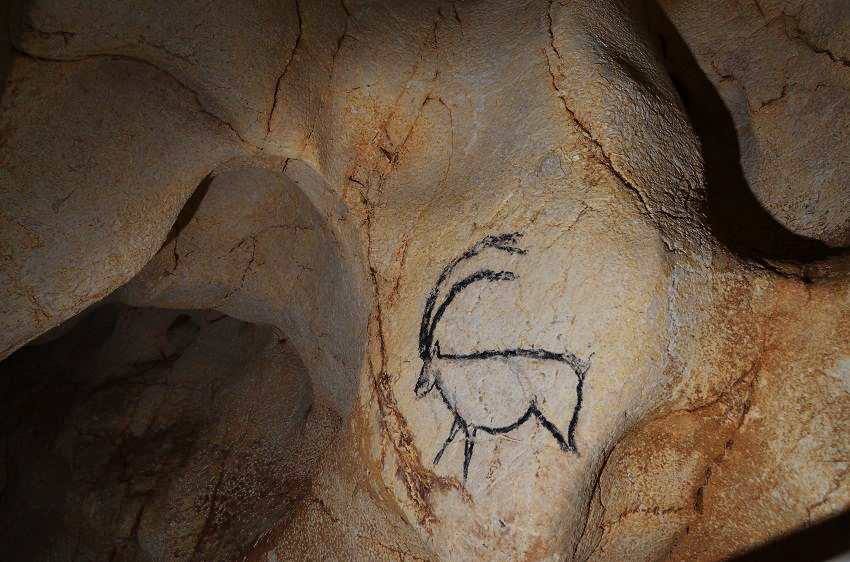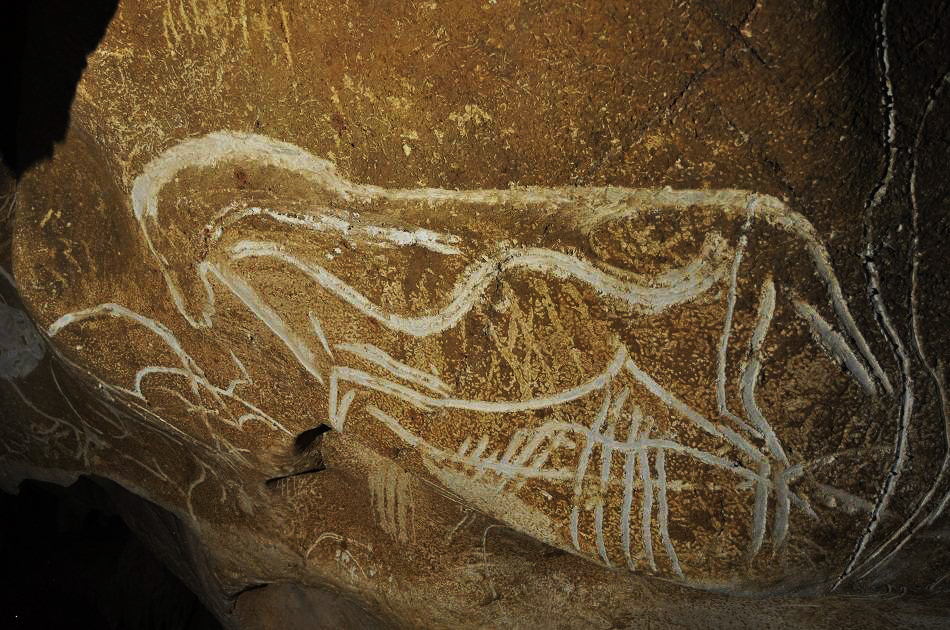


An article by Charlie Smith on straight.com - Museum of Anthropology will host French paleontologist who studies the world's oldest cave paintings - reports on the recent screening of Werner Herzog's The Cave of Forgotten Dreams and Jean-Michel Geneste's presentation cohosted by the Consulate General of France in Vancouver, the Peter Wall Institute for Advanced Studies, the Museum of Anthropology, and the Royal B.C. Museum.

Image: Jean-Michel Geneste
Jean-Michel Geneste, the paleontologist who oversees scientific studies of the cave paintings of Chauvet, states that researchers have discovered 445 paintings inside the cave. Radiocarbon dating has demonstrated that charcoal art in the cave goes back 36,000 years. He added that it is impossible to date the other paintings.
"Usually in paleolithic times in Western Europe, people didn't live inside the cave," Geneste said. "They lived outside and then would go inside the cave for rituals, ceremonial purposes or to create rock art."

Image: Jean-Michel Geneste
In Chauvet Cave, scientists have found no evidence of food residues or any activity except what's linked to creating rock art.
Geneste stated that some of the panels inside the cave extend over 30 or 40 square metres. The cave itself is 500 metres long and artists would have needed torches or grease lights to be able to do their work.
According to Geneste, artists of that era painted large animals common in Western Europe at that time, including woolly rhinos, lions, hyenas, bears, horses, bison, and ibexes.

Image: Jean-Michel Geneste
"In the deep part of the cave, there is the lower part of a body of a woman, but embedded in a bison," he said.
The paleontologist has concluded that it was likely forbidden to draw portraits of people in that era.
Chauvet Cave was discovered in 1994 and is a UNESCO World Heritage Site. Geneste said that it took four years of preparation before research could begin on the paintings. Work proceeds slowly because researchers cannot walk on the cave floor. Instead, they remain on iron pathways and record visual aspects from a distance. No more than 12 people are allowed inside the cave at any time.
Geneste noted that 36,000 years ago, there were no more than one million people living on the entire planet.
In Western Europe, he said there were upward of 100 people in each community, divided into smaller campsites of 10 or 15 people. They wore beautiful clothes, beads, and knew how to use needles. "They had a nomadic life, following deer and reindeer."
Geneste said that art similar to that in Chauvet Cave has been found in other parts of Western Europe. This suggests that the artists' methodology was shared with those they met.
He also stated that paleolithic-era art is not unique to that part of the world, noting that he's examined other ancient rock art in Russia, Australia, and Africa.
More recent cave paintings can be found in British Columbia along the Fraser and Thompson rivers, dating back 4,000 years.
"I think you have something like 100 or 200 rock-art sites," Geneste said. "Not big ones but with beautiful rock art."
Visit the Chauvet section:
by Bradshaw Foundation
Monday 30 May 2022
by Bradshaw Foundation
Wednesday 19 January 2022
by Bradshaw Foundation
Thursday 06 January 2022
by Bradshaw Foundation
Monday 06 December 2021
by Bradshaw Foundation
Monday 29 November 2021
by Bradshaw Foundation
Monday 25 October 2021
by Bradshaw Foundation
Monday 12 July 2021
by Bradshaw Foundation
Monday 24 May 2021
by Bradshaw Foundation
Tuesday 20 April 2021
by Bradshaw Foundation
Thursday 01 April 2021
by Bradshaw Foundation
Tuesday 23 February 2021
by Bradshaw Foundation
Thursday 14 January 2021
by Bradshaw Foundation
Friday 18 December 2020
by Bradshaw Foundation
Sunday 06 December 2020
by Bradshaw Foundation
Thursday 26 November 2020
by Bradshaw Foundation
Wednesday 07 October 2020
by Bradshaw Foundation
Monday 30 May 2022
by Bradshaw Foundation
Wednesday 19 January 2022
by Bradshaw Foundation
Thursday 06 January 2022
by Bradshaw Foundation
Monday 06 December 2021
by Bradshaw Foundation
Monday 29 November 2021
by Bradshaw Foundation
Monday 25 October 2021
by Bradshaw Foundation
Monday 12 July 2021
by Bradshaw Foundation
Monday 24 May 2021
by Bradshaw Foundation
Tuesday 20 April 2021
by Bradshaw Foundation
Thursday 01 April 2021
by Bradshaw Foundation
Tuesday 23 February 2021
by Bradshaw Foundation
Thursday 14 January 2021
by Bradshaw Foundation
Friday 18 December 2020
by Bradshaw Foundation
Sunday 06 December 2020
by Bradshaw Foundation
Thursday 26 November 2020
by Bradshaw Foundation
Wednesday 07 October 2020
Friend of the Foundation











